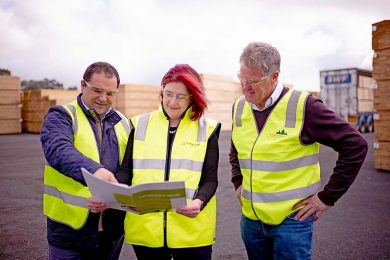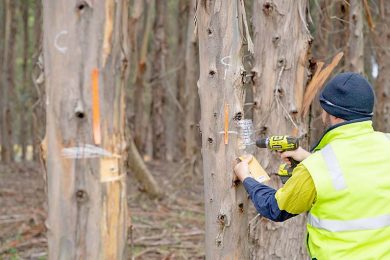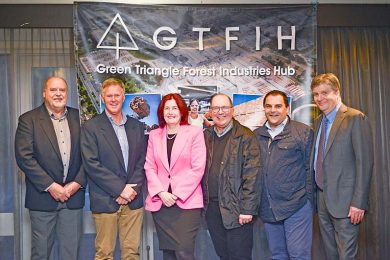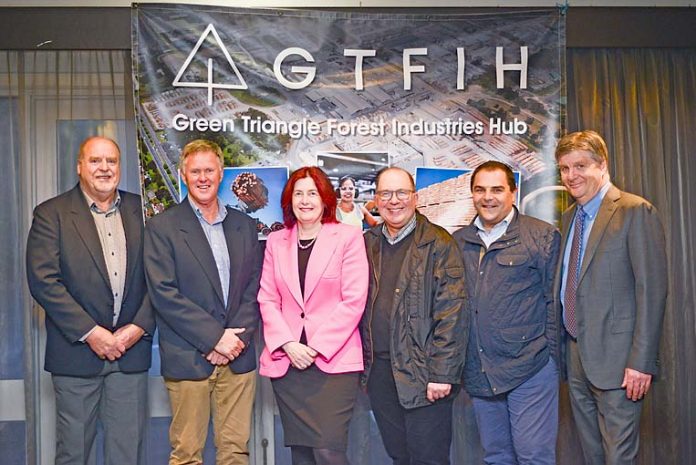
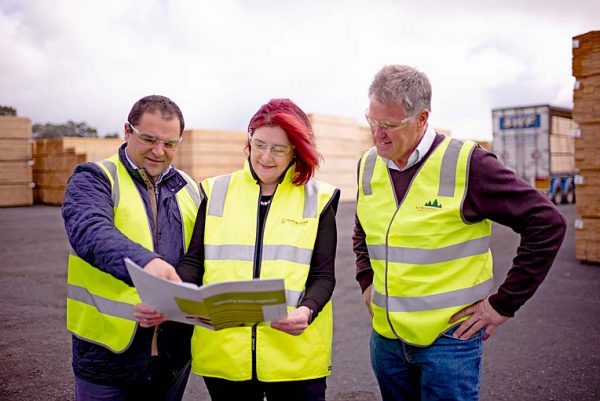
THE Green Triangle forestry sector has unveiled an ambitious $1b growth action plan to catapult the regional industry into the nation’s premier “fibre bowl”.
Nine forestry and timber processing companies across the Green Triangle have united in an unprecedented approach to increase the sector’s economic output by more than 65pc.
Potentially, this sector could grow into a $2.5b regional industry within 10 years.
While the sector already underpins 7000 jobs, the growth plan – unveiled in Mount Gambier this week – also aims to fuel increased local processing capacity.
The industry action agenda – driven by the Green Triangle Forest Industries Hub – also foreshadowed the growth target would attract up to $300m in new “downstream” investment.
The plan will potentially mean the Green Triangle – which is already home to the nation’s largest forestry processing cluster – will contribute to 20pc of the national growth target outlined by the Federal Government.
The blueprint aims to create sustainable regional wood fibre supply for construction of homes, furniture and household products and contribute to South Australia’s and Victoria’s economy and exports.
Hub chair Linda Sewell – the chief executive officer of OneFortyOne – said the plan demonstrated the long-term social, environmental and economic commitment of each of the hub members to the industry and the Green Triangle.
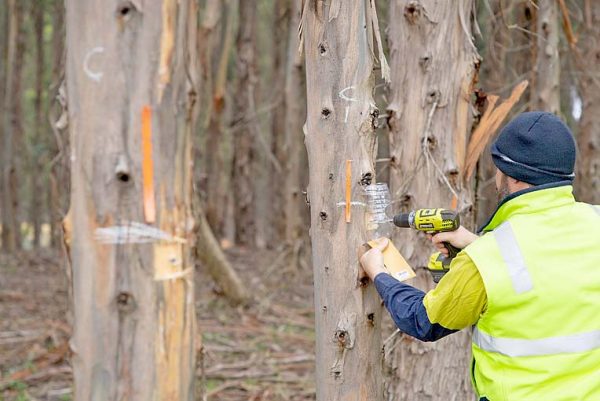
“We are on the cusp of building this region into what we call the ‘fibre bowl’ of Australia and produce so much more of the product and fibre than we currently do,” Ms Sewell said at the launch.
“It takes great big vision to do things like that.”
She said Federal Government funding was facilitating the region to ” action” the plan, which would see “more trees and more local processing capacity”.
“The action agenda is the hub’s 10-year plan for growing future opportunities for the region, which will contribute to the longer term prosperity of Green Triangle communities,” Ms Sewell said.
“Our industry supports more than 7000 people in the Green Triangle region by providing a sustainably-produced timber source, fulfilling the needs of people for a whole range of products essential to our daily lives.
“As stewards of our industry, we want to build on the successes of the past decade and create a significant fibre bowl. The industry has gone from strength to strength, continuing to support local communities and providing stable, long-term employment.”
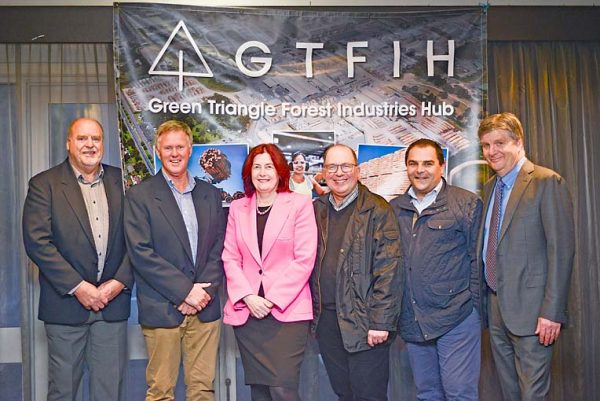
Meanwhile, the hub’s deputy chair Ian McDonnell outlined the need to work in collaboration with governments, communities and landholders to implement the action agenda and revealed members would invest up to $300m in local processing and manufacturing equipment upgrades to boost efficiency.
He said the action agenda was a plan for growth.
“Without action, we will not be able to meet future demand for timber products and there will be an overall reduction in Australia’s national plantation estate, which will negatively impact the industry and communities that rely on it,” he said.
“This supply constraint has been identified in the Federal Government’s plan, which is calling for one billion trees to be planted across Australia to meet demand and support jobs. We’re excited that our 200 million tree goal is a significant 20pc of the national target.”
At the launch of the plan, Mr McDonnell said he was a supporter of local processing and the need to grow that sector.

